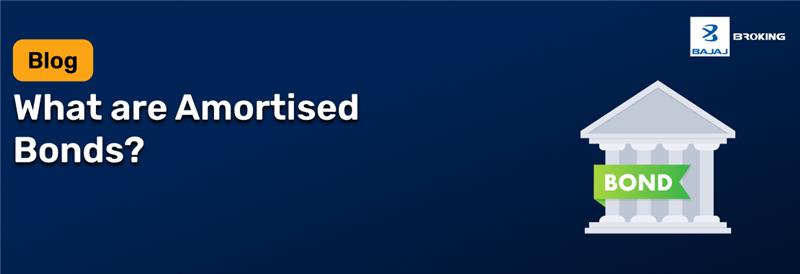How Amortised Bonds Work?
Here’s what happens behind the scenes when you invest in one of these bonds. The issuer sets a payment schedule from the start. Each instalment you receive includes interest plus part of your principal.
At first, a larger share of your payment goes towards interest. Over time, as the principal shrinks, the interest portion gets smaller and the principal part grows. It’s a slow shift — but one you’ll notice as the bond matures.
Let’s say you invest in a five-year amortised bond. Every year, you’ll get a payment that chips away at the debt. By the end, you’ll have received all your interest and your original investment back — bit by bit.
For you, this steady return structure is a big advantage. It gives you regular income, helps you track how much capital you’re recovering, and keeps surprises to a minimum.
Example of Bond Amortisation
Let's analyse it with real numbers.
Assume you buy a 5-year bond that has a face value of Rs. 1,000 and pays an annual rate of 5%. The bond has a straight-line amortisation schedule, so the total payment will be the same in each year.
Here’s what the repayment might look like:
Year 1: Payment Rs. 215.89 | Interest Rs. 50.00 | Principal Rs. 165.89
Year 2: Payment Rs. 215.89 | Interest Rs. 41.29 | Principal Rs. 174.60
Year 3: Payment Rs. 215.89 | Interest Rs. 31.38 | Principal Rs. 184.51
Year 4: Payment Rs. 215.89 | Interest Rs. 21.23 | Principal Rs. 194.66
Year 5: Payment Rs. 215.89 | Interest Rs. 10.79 | Principal Rs. 205.10
You’ll notice something important here. In the early years, most of what you get is interest. But as time goes on, more of each payment goes towards reducing the debt.
By the time the bond matures, the full Rs. 1,000 is repaid — along with total interest of Rs. 159.69. For you, this steady flow of money makes planning and budgeting much easier.
Benefits of Amortised Bonds
Should you be contemplating these bonds, here is what they may mean for you:
Cash flow certainty: You will know precisely what amount is coming in and when, thus making summer months easier to plan.
Reduced chance of default: Issuers pay back the principal incrementally, making the chances of default lower than other bonds that pay back all at once.
Diverse Investment Portfolio: The addition of amortised bonds will help to diversify the investment risk over various issuers and timeframes.
Stabilised Price: Due to amortised payments, prices will move less (greater stability) because less of the principal is repaid.
Customisable Features: Payment structure and interest terms can be fashioned to cover many different events or needs, including yours.
Additional Read: What is a Bond? Meaning & Examples
Methods of Bond Amortisation
Not all amortised bonds operate the same way. The manner in which they amortise the money makes a difference. The most common methods of amortisation are:
Straight-line amortisation: The principal portion is conveyed equally over each payment. This is simple, effective, and predictable for you.
A fixed interest-rate amortisation: Payments are based off a fixed interest rate, meaning the interest decreases while the principal repayment increases over the life of the bond.
Knowing the differing amortisation methods gives you clarity for your planning purposes. You will know exactly how much of your money is expensed in each payment, as well as how much you'll have spent in total interest over the life of the bond.
If predictability means something to you and is important for planning purposes, the amortisation method is something you'll want to consider before you make your investment.
Final thought
Amortised bonds are about balance — a mix of income and capital that returns to you steadily over time.
If you want regular payments instead of a big lump sum at maturity, this structure makes a lot of sense. It gives you clarity, helps you manage cash flow, and reduces the uncertainty that comes with waiting for a one-time payout.
For issuers, spreading out repayments lowers their financial pressure. For you, it builds reliability into your portfolio. And sometimes, that reliability is more valuable than chasing higher but unpredictable returns.
In the end, amortised bonds aren’t just an investment product — they’re a financial rhythm. One that keeps money flowing back to you in a way that’s steady, structured, and surprisingly satisfying.
Additional Read: What is Straight Bonds














